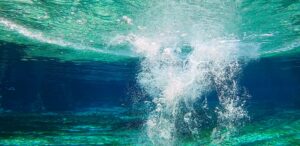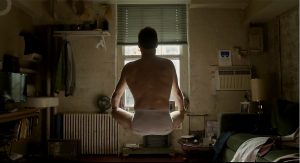

Intervening Hands: Building Discoursal Legacies of Film Sound with Apocalypse Now and A Man Escaped
Liam Bradford
How these films compel us to rethink ingrained approaches to sound in cinema
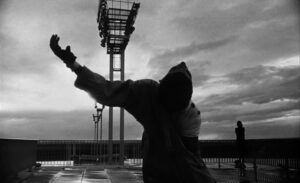
An Examination of Time, Medium, and the Moving Image in Chris Marker’s La Jetée
Campbell Mah
How Marker’s film reflects on the means of its own creation
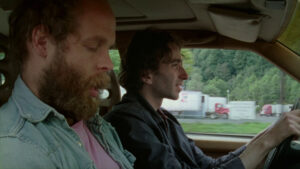
Phenomenology and Its Creation and Exploration of Environment in Kelly Reichardt’s Old Joy
Ana Hoppert Flores
How this film constructs an environmental world and makes mood primary
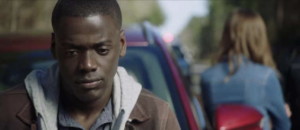
The Final Girl and Final Boy: Reframing Gender Identities in Alien and Get Out
Matthew Gebbia
How respective films by Scott and Peele rewrite gendered conventions of genre

Horror as a Vehicle: The Terror of Technology in Kiyoshi Kurosawa’s Pulse
Jack Ashby
How this classic of J-horror explores universal fears of loneliness

Turning the Camera Around to You: The Passenger and Objectivity vs. Subjectivity
Charlie Brownlee
How Antonioni’s camera movements implicate the observer
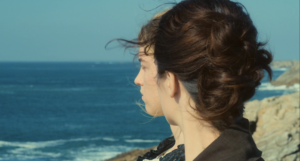
Unconventional Space: Queering and Liberation of Spaces in Portrait of a Lady on Fire and Hold Me While I’m Naked
Brian Rosenzweig
How two queer films open up spaces for melancholy, joy, and transience
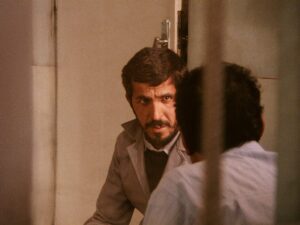
What Makes an Auteur? An Analysis of Abbas Kiarostami’s Close-Up
Andrew Tomei
How Kiarostami’s self-reflexive film lends itself to an exploration of authorship
 What Is Outside Is Also Inside: The (Un)familiar World of Zama
What Is Outside Is Also Inside: The (Un)familiar World of Zama
Abigail Burns
How sensuous forms lend themselves to phenomenological film theory
 Sound Builds Its Own World: Auditory Montage in Lucrecia Martel’s Zama
Sound Builds Its Own World: Auditory Montage in Lucrecia Martel’s Zama
Theo Holt
How the complex layering of sound imparts a feeling of entrapment in Martel’s anticolonial masterpiece
goin thru it.
Carly Peck
A short film exploring “photogenic” processes of memory, trauma, and working-through
It’s Your Move
Noah Maynard
A short film as a chess board somewhere between dream and reality
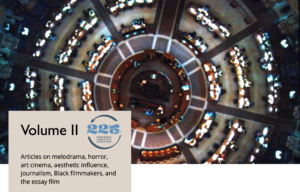
This second volume celebrates 225 years of Rhetoric, Writing, Film, and Literature at UNC Chapel Hill. Visit ecl225.unc.edu for further details.
 The Portrait Looks Back: Revising Hitchcockian Tradition in Portrait of a Lady on Fire
The Portrait Looks Back: Revising Hitchcockian Tradition in Portrait of a Lady on Fire
Halynna Snyder
How Céline Sciamma’s film redefines romance and subverts the myth of the muse
 Vertiginous Memories: Traces of Hitchcock in La Jetée and Portrait of a Lady on Fire
Vertiginous Memories: Traces of Hitchcock in La Jetée and Portrait of a Lady on Fire
Lexi Baird
How Chris Marker and Céline Sciamma respectively rework motifs from Vertigo
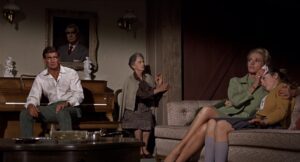 Matriarchy in The Birds: A Feminine Power Struggle between Melanie and Lydia
Matriarchy in The Birds: A Feminine Power Struggle between Melanie and Lydia
Reanna Brooks
How Hitchcock’s horror-melodrama thematically explores a crisis within a makeshift family
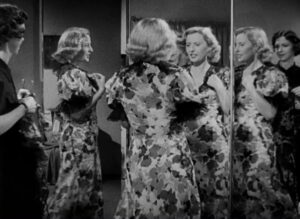 Gender Performance as Sacrifice in Stella Dallas
Gender Performance as Sacrifice in Stella Dallas
Barbara Blaschke
How Barbara Stanwyck’s heroine navigates society’s loopholes through her sacrificial acts
 Masculine Hierarchies, Voice, and the Clown-Cuckold Figure in The Blue Angel
Masculine Hierarchies, Voice, and the Clown-Cuckold Figure in The Blue Angel
Liam Bradford
How Sternberg’s melodrama spotlights emasculation vis-à-vis the rise of the “New Woman”
 Jia Zhangke’s Emotional Questioning of Contemporary China
Jia Zhangke’s Emotional Questioning of Contemporary China
Tyler Kwok
How one of the world’s most resourceful independent directors meditates on mainland China’s social, economic, and political transformations
 Hanging Out at the Movies: Nostalgia, Spectatorship, and Slowness in Tsai Ming-liang’s Goodbye, Dragon Inn
Hanging Out at the Movies: Nostalgia, Spectatorship, and Slowness in Tsai Ming-liang’s Goodbye, Dragon Inn
Josh Martin
How Tsai’s emblematic slow film stages a hangout session with its nostalgic audience
 Infectious Atmospheres: The Horror of Japanese New Media in Ring
Infectious Atmospheres: The Horror of Japanese New Media in Ring
Ben Van Welzen
How this J-horror classic envelops the spectator with virally contagious forces
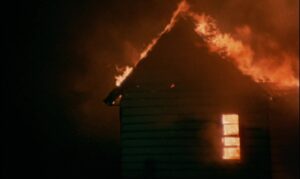 Political Monstrosity Framed as Normality: Romero’s Horror Aesthetics in The Crazies
Political Monstrosity Framed as Normality: Romero’s Horror Aesthetics in The Crazies
Ben Newport-Foster
How Romero’s underseen horror film exposes the incompetence of state power
 Homegrown: Short Horror Film
Homegrown: Short Horror Film
Evan Davison
A cinematic journey into houseplant horror and the gothic uncanny
 Funneling Out: The Ever-Present Constriction on Black Filmmakers in Hollywood
Funneling Out: The Ever-Present Constriction on Black Filmmakers in Hollywood
Veronica Chandler
How Black creatives are striving to change how we discuss Black media
 From Hurdanos to Hakua Cults: On Ethnographic Surrealism in Buñuel and Rouch Films
From Hurdanos to Hakua Cults: On Ethnographic Surrealism in Buñuel and Rouch Films
Macy Meyer
How two controversial documentaries use surrealism to enact ethical provocations
 Couples Lost in Time: Hiroshima, mon amour and L’Eclisse
Couples Lost in Time: Hiroshima, mon amour and L’Eclisse
Dylan Caskie
How modern cinematic experiments by Resnais and Antonioni reconfigure the romantic couple
 Affective Mood as a Narrative Tool in A Beautiful Day in the Neighborhood
Affective Mood as a Narrative Tool in A Beautiful Day in the Neighborhood
Julia Stamey
How Marielle Heller’s take on Mr. Rogers uses mood to teach and soothe its adult audience
 Drama in the Dull: Journalistic Process and Moral Ambiguity in All the President’s Men
Drama in the Dull: Journalistic Process and Moral Ambiguity in All the President’s Men
Ryan Wilcox
How Pakula’s cinematic treatment of investigative journalism negotiates between tiny details and infinitely large corruption

Our inaugural volume presents twelve critical essays, all written by current or former students in UNC-Chapel Hill film studies courses. While the authors collectively cover a wide range of topics and take different approaches, they each pay meticulous attention to formal detail, investigating the larger cultural and political stakes that bear on certain styles and genres, from horror to the essay film. By bridging the avant-garde and mainstream, putting theory in the service of close analysis, and approaching the moving image on a global stage, these essays together provide a solid foundation for the critical work that will be featured in Aspect going forward.
Surreal Exposures: Found Footage Experiments in Avant-Garde Cinema
Lexi Baird
How three filmmakers (Joseph Cornell, Martin Arnold, and Peter Tscherkassky) rework already existing films, unleashing new resonances
 Cemetery of Splendor as New Queer Surrealism
Cemetery of Splendor as New Queer Surrealism
Patrick Costley
How Apichatpong Weerasethakul’s slow, queer film from Thailand revises the political capabilities of surrealism
 Earn ‘n’ Cash: Surrealist Comedy, Code-Switching, and Capitalism in Atlanta and Sorry to Bother You
Earn ‘n’ Cash: Surrealist Comedy, Code-Switching, and Capitalism in Atlanta and Sorry to Bother You
Dylan O’Connor
How two surreal comedies authored by African American artists explore the topic of racial performance as it relates to capitalism
 Suspense and the Supernatural in Personal Shopper and Let the Right One In
Suspense and the Supernatural in Personal Shopper and Let the Right One In
Hateya Foxx
How two arthouse thrillers convey suspense through offscreen space, sound, and the technique of “deframing”

Inhuman Violence of Capitalism in Alien
Josh Martin
How Ridley Scott’s science fiction/horror masterpiece addresses capitalistic exploitation through its themes and atmospheric style
 Fascism, the Phallus, and the Grotesque in Dr. Strangelove
Fascism, the Phallus, and the Grotesque in Dr. Strangelove
Claude Wilson
How Kubrick’s endlessly relevant satire exposes the links between patriarchal and fascistic attitudes
Is this Some Kind of Joke? Surrealist Tragicomedy in Alejandro González Iñárritu’s Birdman and the Coen Brothers’ A Serious Man
Felix Murithi
How two surreal tragicomedies draw us into their characters’ existential angst
 Minds Full of Scorpions, Witches in the Wings: Probing the Liminal States and Marginal Spaces of Kurosawa’s Throne of Blood and Welles’ Macbeth
Minds Full of Scorpions, Witches in the Wings: Probing the Liminal States and Marginal Spaces of Kurosawa’s Throne of Blood and Welles’ Macbeth
Timothy Dement
How two adaptations of Shakespeare’s tragedy use the witches as a pretext to explore the offscreen as a key cinematic resource
 A Thousand-Year Enigma: Adapting The Tale of Genji
A Thousand-Year Enigma: Adapting The Tale of Genji
Carissa Roets
How two films inventively adapt one of the world’s oldest novels, an eternally important text in Japanese culture
 The Unfixed Present of Memories of Underdevelopment
The Unfixed Present of Memories of Underdevelopment
Miguel Penabella
How Tomás Gutiérrez Alea’s landmark film from 1968 addresses the Cuban Revolution and its aftermath through reflective articulations of cinematic time
 Agnès Varda: The Gleaner of All Things
Agnès Varda: The Gleaner of All Things
Macy Meyer
How Varda’s seminal essay film, The Gleaners and I, conceptualizes gleaning as an artistic and political activity
 Kutya
Kutya
Lili Zay
Video essay reflecting on how human and extra-human creatures are vitally intertwined


